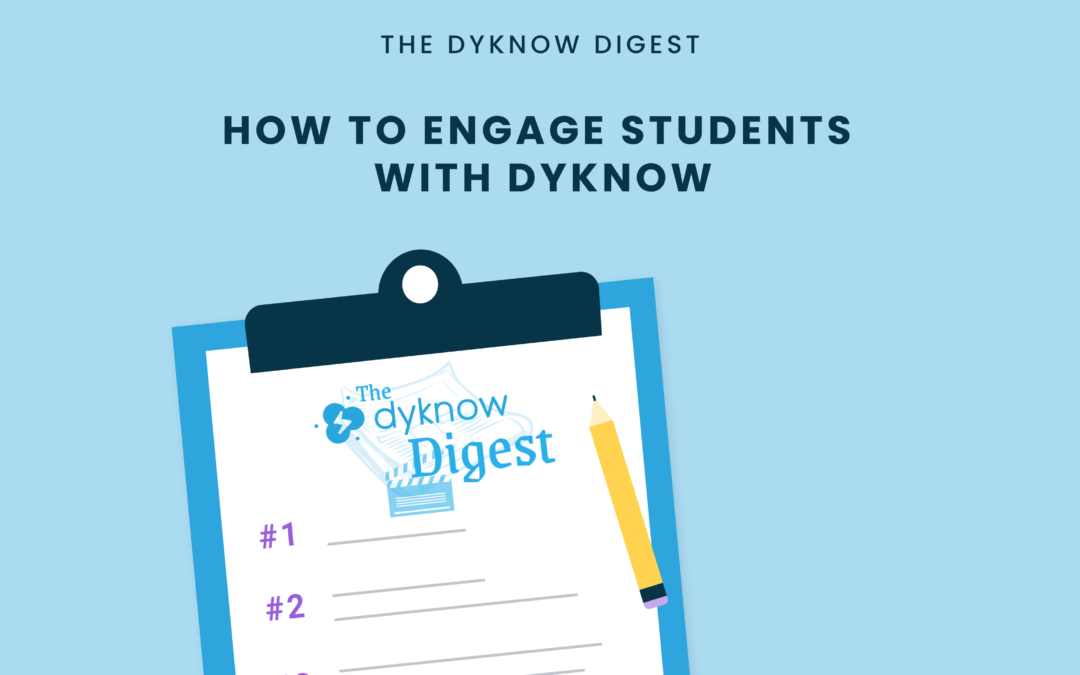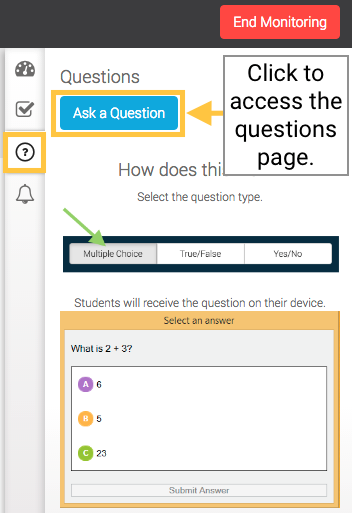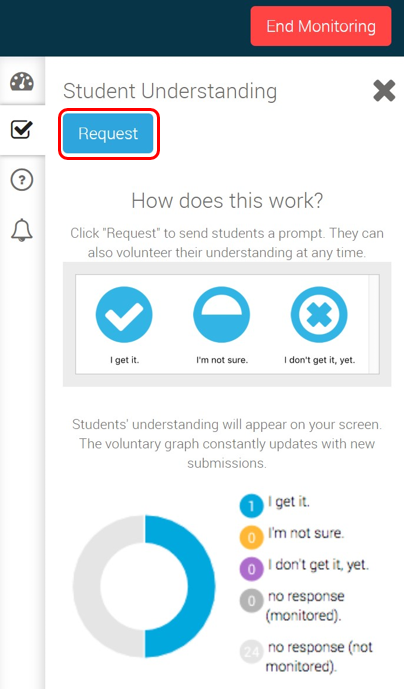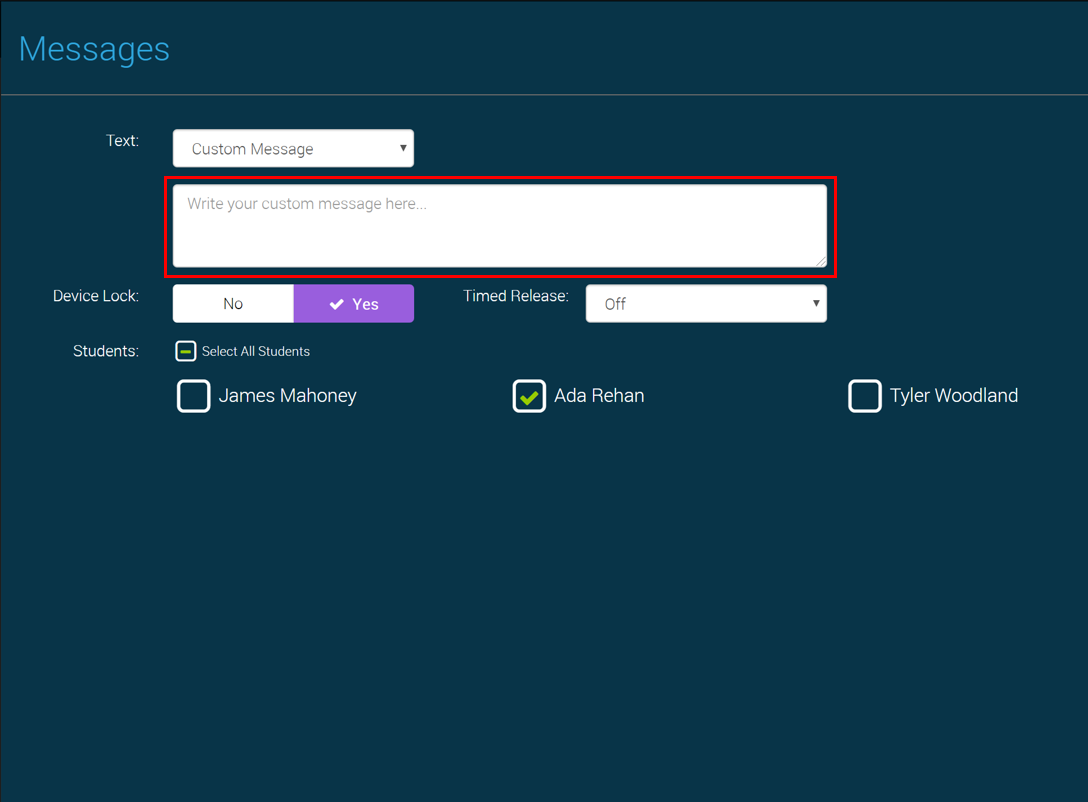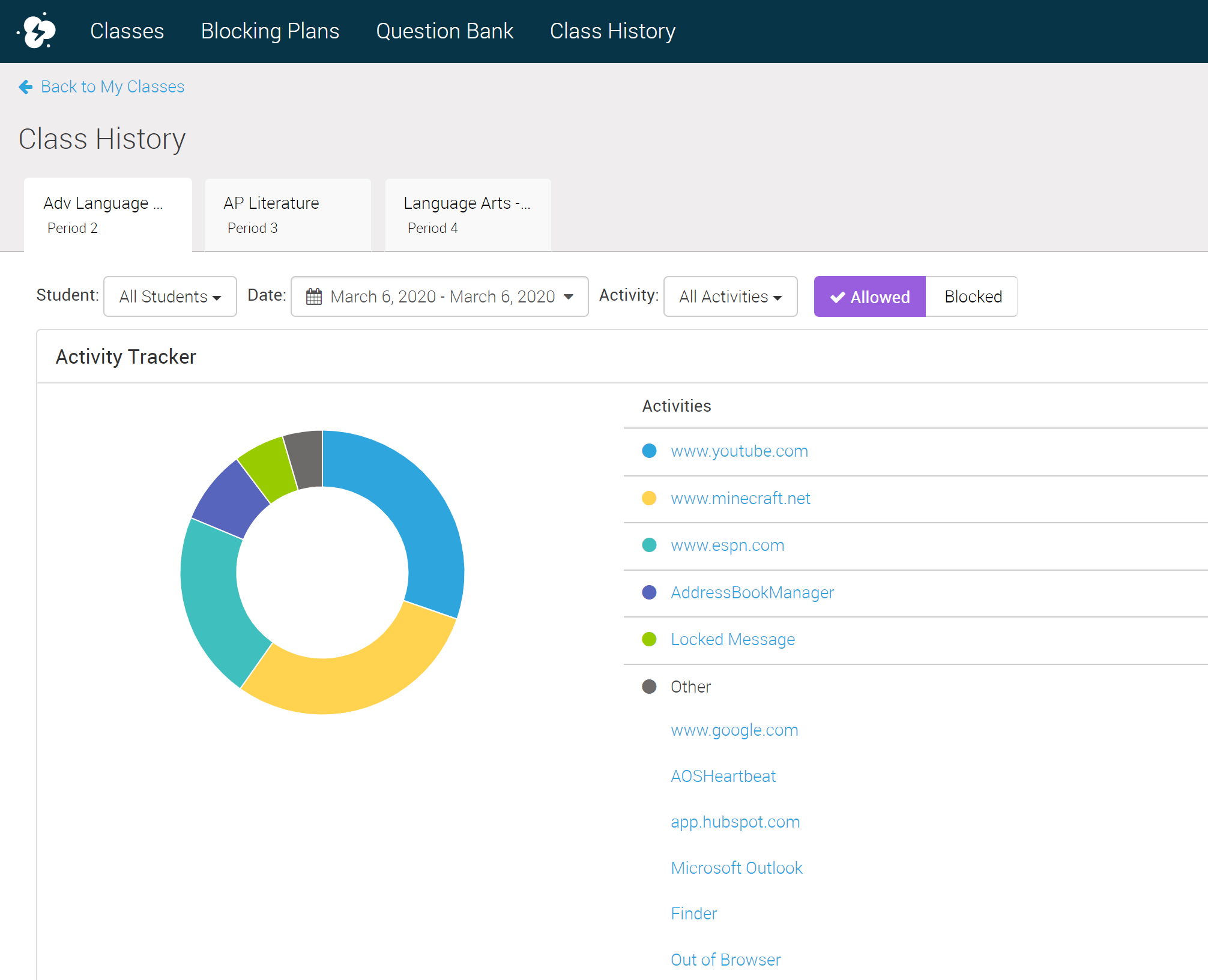This week on The Dyknow Digest, we’re answering a question submitted by Sarah Westmoreland and sharing how K-12 teachers everywhere can engage students using Dyknow. Not a Dyknow user? Start Your Free Trial Today!
The Question:
“As a veteran teacher who is new to the virtual world, I am just discovering that Dyknow is a thing and wow, do I love it! I would like more information on how to make this a more useful tool for student engagement. I would also be interested in documentation (like screenshots or data capturing) as evidence for hard working students or to reach out to students who aren’t coming to school. I love sending secret, uplifting messages to students to encourage them. I have been teaching in the inner city, Springfield MA for 10 years and I love my students every day. #commercepride!”
– Sarah Westmoreland, Teacher at High School of Commerce
How To Engage Students with Dyknow
Chuck Holland, Director of Instructional Technology at Richland School District Two, recently shared how teachers in his district have been leveraging certain Dyknow features for student engagement and formative assessment. Chuck explianed that this time has enabled Richland Two teachers to see the benefits of Dyknow beyond solely device monitoring.
This article will share 4 ways that you can use Dyknow to promote student engagement, formative assessment, and review student performance.
1. Use Dyknow Questions, Polls, and Messages for Formative Assessment
Features within Dyknow such as questions, polls, and messages enable teachers to complete quick formative assessment to gauge student understanding and engage with students easily during class.
Sending messages within Dyknow can be used to create a more personalized student engagement experience. Teachers can create custom messages or use pre-existing messages within Dyknow to engage with one, a few, or all students to check in, communicate information quickly, and enable personalized engagement when needed.
Dyknow Polling (Student Understanding) gives teachers the capability to quickly ask students how well they are understanding the current lesson or class material. Students can simply share if they are understanding or not when prompted or voluntarily share this information with their teacher directly through Dyknow. This gives teachers increased visibility into student understanding – even fro afar – and enables quick communication and engagement with students.
2. Push out URLs using Dyknow Messages to Keep Students Engaged
To push out URLs using Dyknow messages, teachers just navigate to Messages and create a custom message. By entering the URL as the custom message and selecting all students, teachers can easily push out a website to the entire class, ensuring that students save time, stay engaged, and are where they need to be.
3. Help students troubleshoot by using Big View in Dyknow
Utilizing Big View within Dyknow for troubleshooting enables teachers to stay within the app to help that student while class is still in session, and not having to take time away from class to join a call with that student or get help from a technology person.
Thanks to @Dyknow I was able to troubleshoot a student signing on to his online textbook from home! pic.twitter.com/guAu1ZRnJv
— Samantha Berry (@SamBerryITRT) April 7, 2020
4. View Class History to Understand Student Engagement
By getting a concrete understanding of what students are doing during class and if they are attempting to get to blocked sites, teachers can address lack of engagement with students who might be falling behind. Similarly, teachers can acknowledge good student behavior by getting class history for students who are performing well and reinforce that behavior by sharing that positive observation wtih parents, fellow teachers, and the student themself.
Start engaging students with Dyknow for free!
Latest blog articles
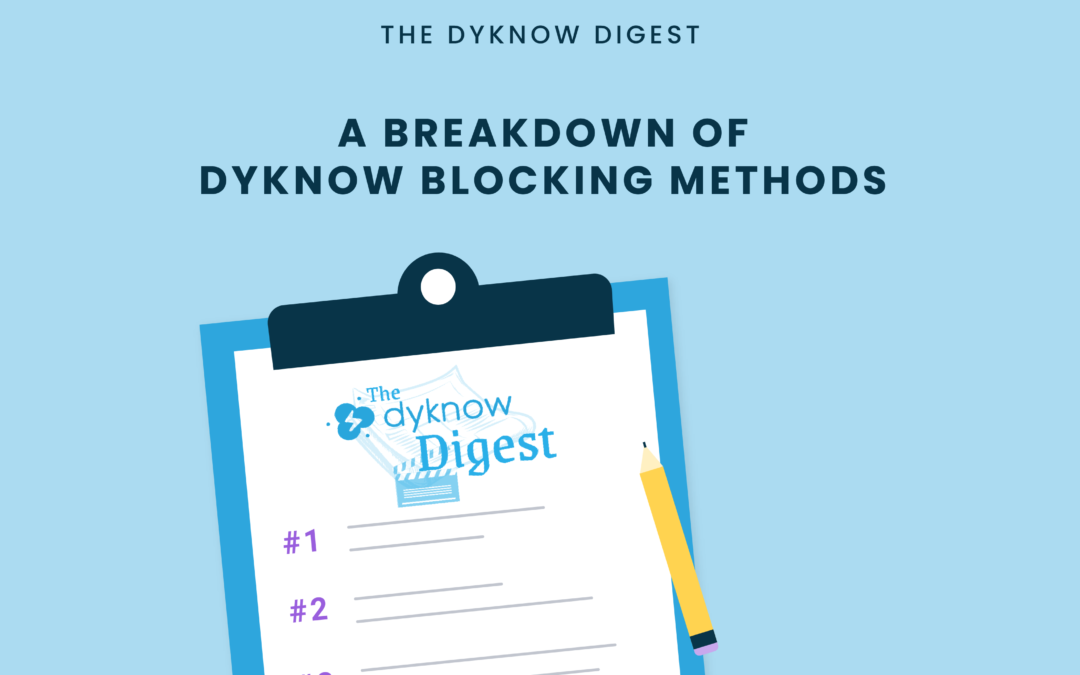
A Breakdown of Dyknow Blocking Methods
Remote and hybrid learning has increased students' access to off-task websites and apps while learning outside the classroom. In turn, this has increased the need for K-12 educators to be able to block these websites and apps during class time to ensure students are...
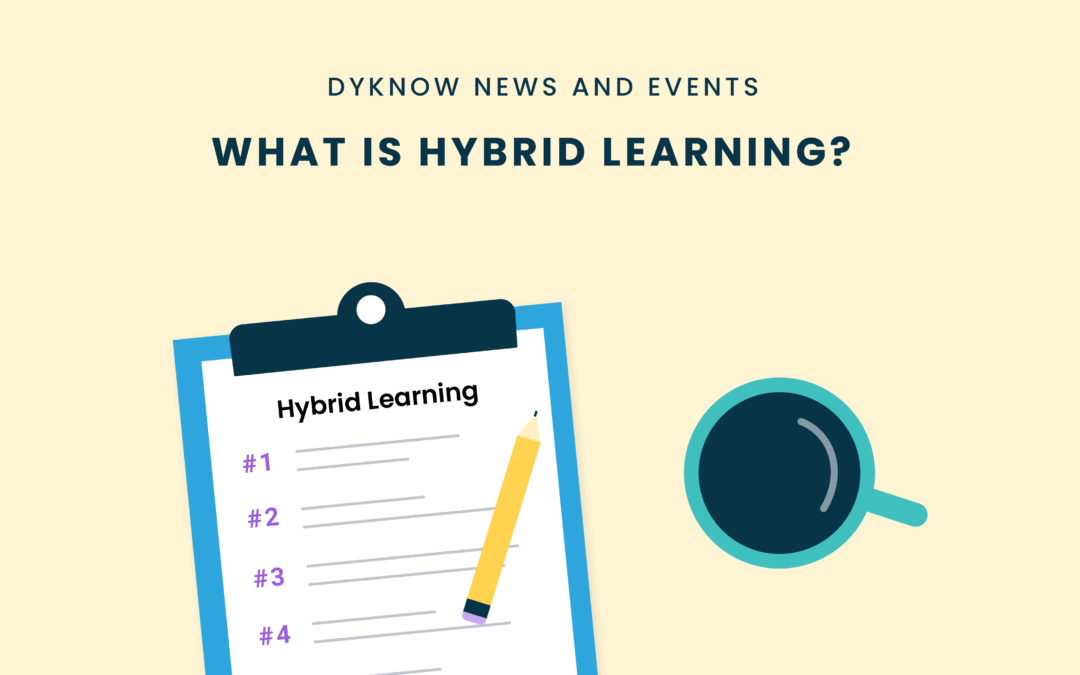
What is Hybrid Learning?
Teachers are searching for the best alternatives to learning to keep students and staff as safe and healthy as possible in the age of COIVD-19. All educators are innovating and creating the best possible outcomes for their students and schools throughout the...
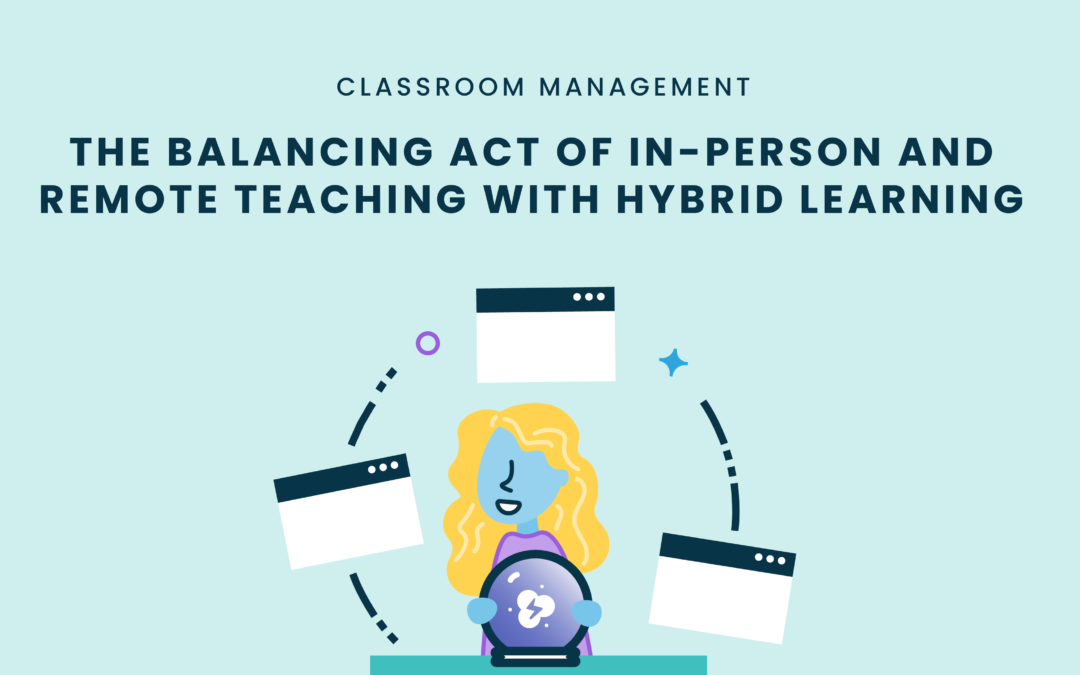
The Balancing Act of In-Person and Remote Teaching with Hybrid Learning
Recently, many teachers are experiencing challenges in their newly structured hybrid classrooms. A hybrid classroom is a classroom style that blends distance learning and in-person learning together. Schools have turned to this alternative to ensure safety measures...

